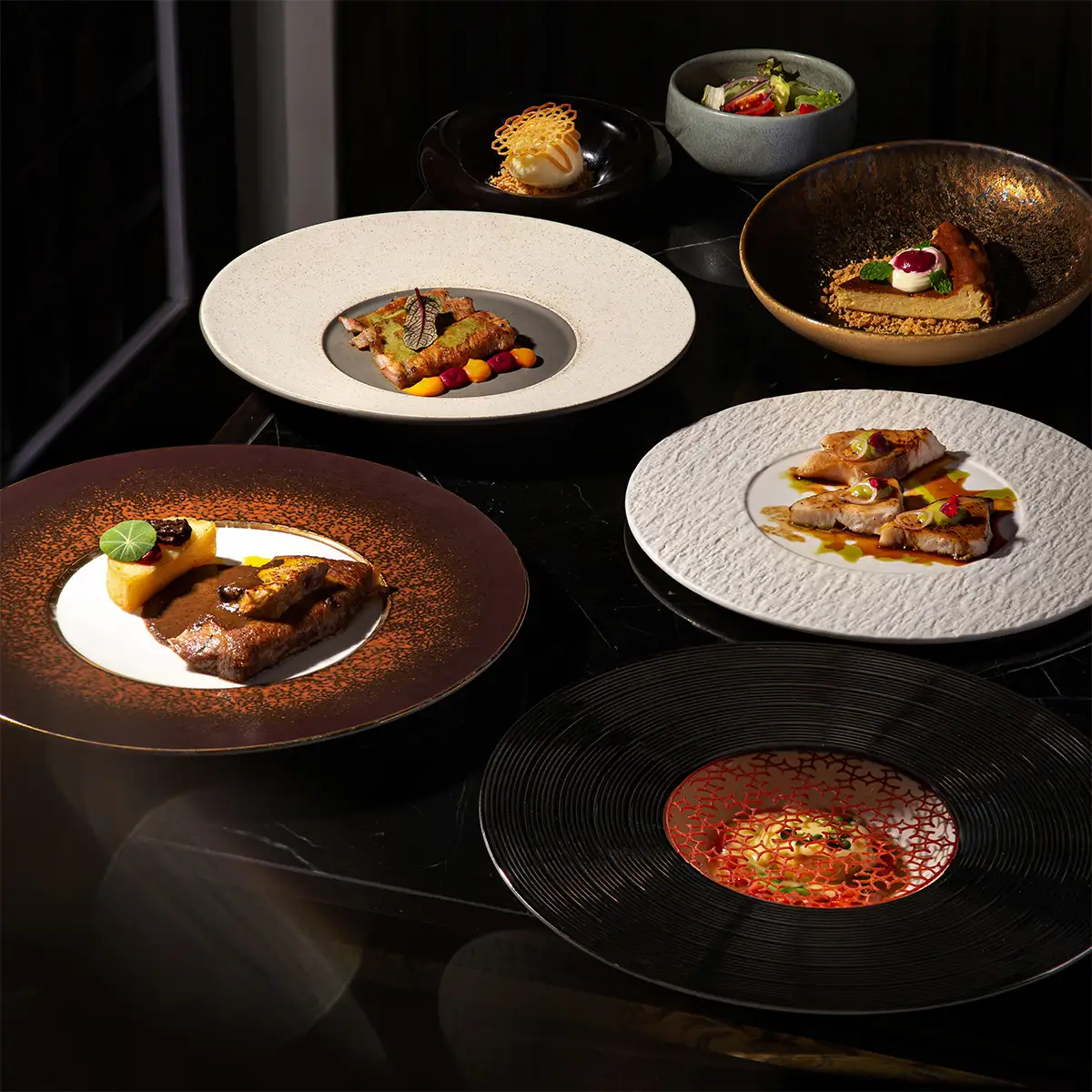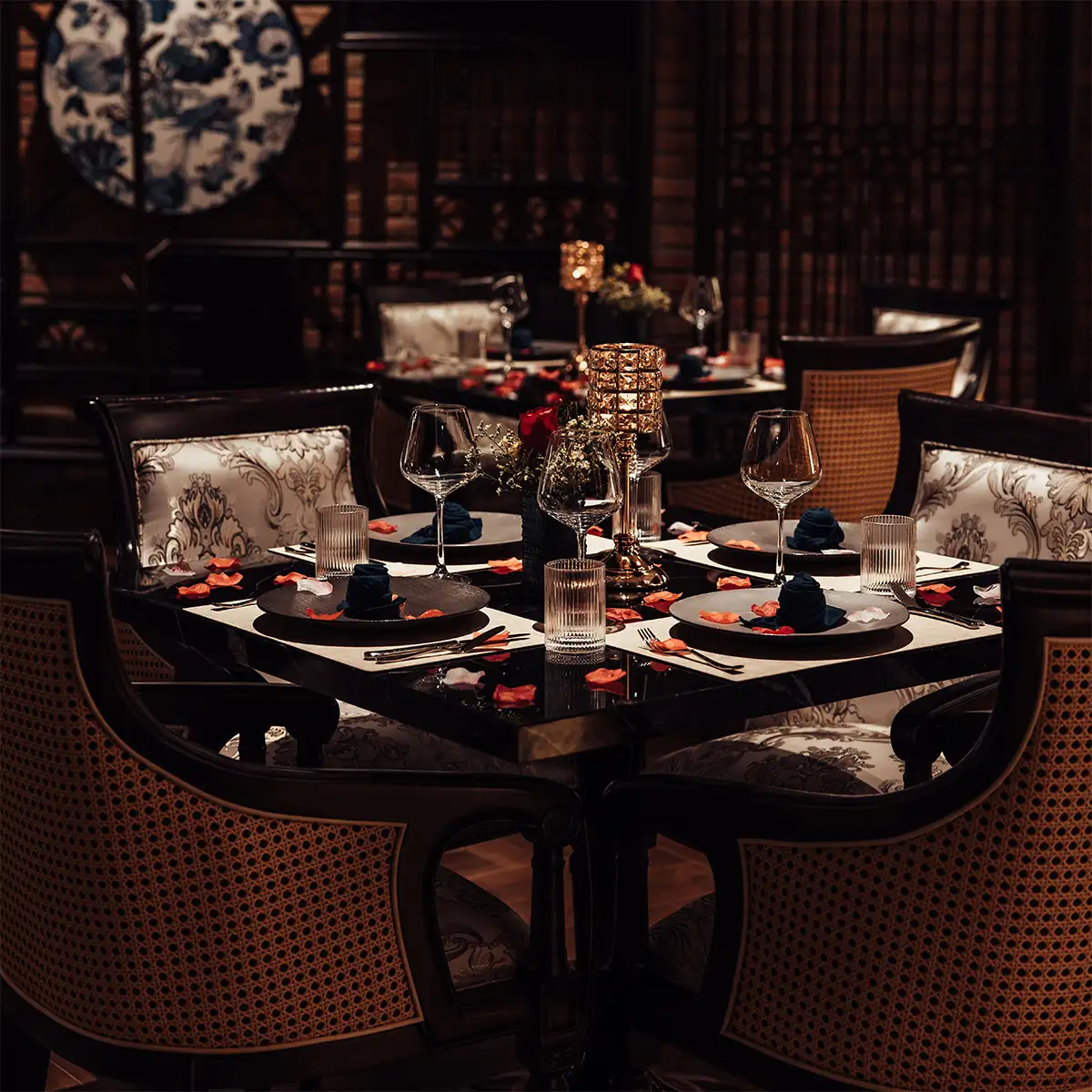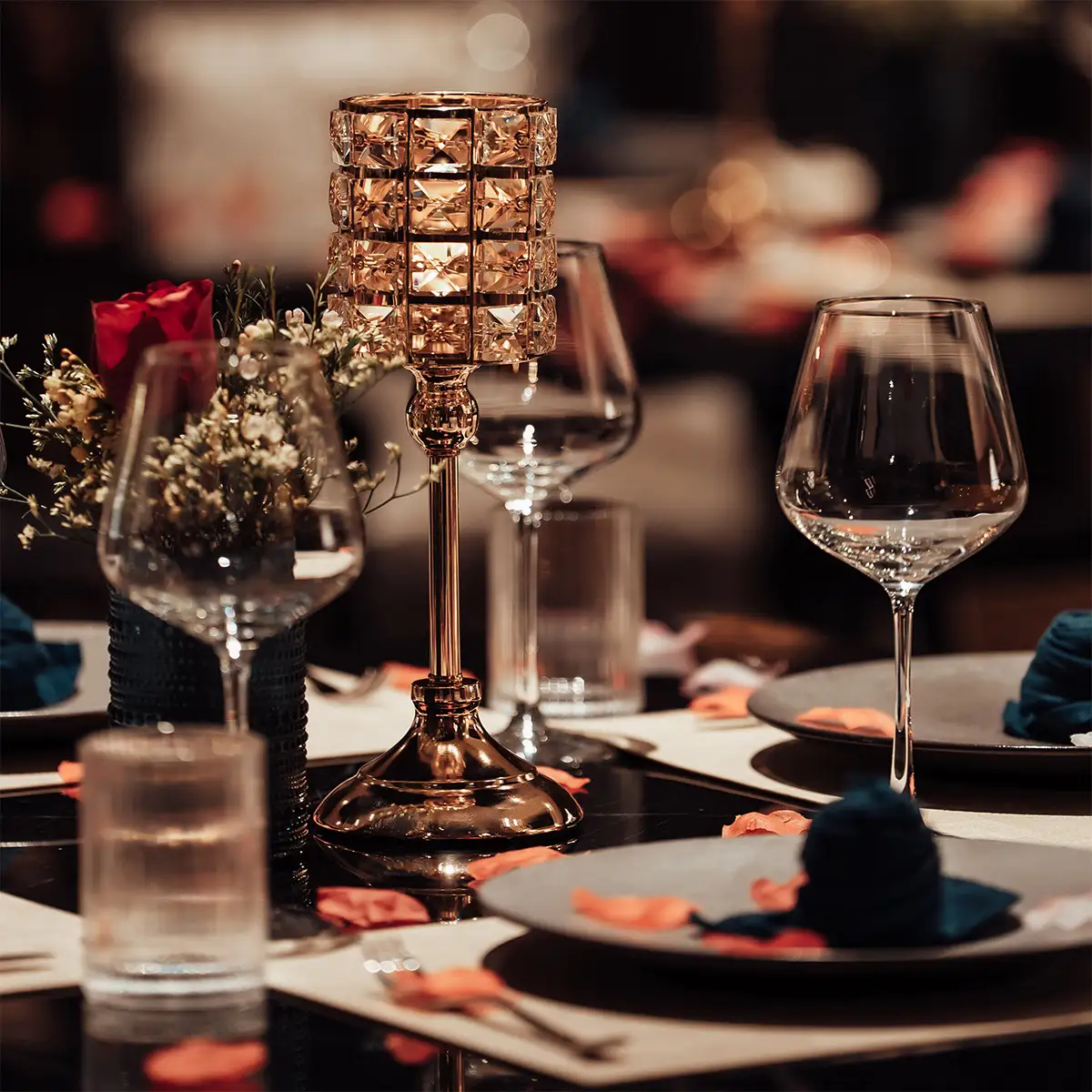- 1. Defining fine dining: A paradigm of culinary excellence
- 2. Pillars of the fine dining experience: cuisine, service, and ambiance
- 2.1. Exquisite cuisine: The artistry on the plate
- 2.2. Impeccable service: The unseen choreography
- 2.3. Refined ambiance: Setting the stage for sophistication
- 3. Navigating fine dining: Dress codes and etiquette
- 3.1. Understanding dress codes: Adhering to the restaurant's standards
- 3.2. Essential dining etiquette: Mastering table manners
- 4. The enduring value of fine dining: Beyond the meal
The allure of fine dining is undeniable. It represents more than a meal; it is a curated experience of sophistication and culinary artistry. In a world with a growing interest in understanding the nuances of high-end gastronomy, it becomes essential to distinguish what truly constitutes this elevated form of dining. This article aims to meticulously define the fine dining style, dissect its fundamental components, and guide our esteemed guests through the essential etiquette for a truly refined experience.
1. Defining fine dining: A paradigm of culinary excellence
At its core, fine dining is a high-end culinary experience characterized by exceptional quality in food, presentation, ambiance, and service, often accompanied by a luxurious setting and meticulous attention to detail. The term "fine" itself emphasizes the premium and refined aspects of the entire engagement, from gourmet cuisine to an elegant atmosphere.
A clear distinction exists when comparing this to casual dining. While a casual restaurant focuses on comfort and convenience, a high-end restaurant operates on a different paradigm. The atmosphere in fine dining is formal and serene, whereas casual settings are relaxed and often bustling. Menus showcase culinary excellence, featuring complex dishes and premium ingredients, in contrast to the simpler, more familiar fare of casual eateries. Service is formal and anticipatory, a stark difference from the informal and functional service elsewhere. Consequently, the price point reflects this comprehensive commitment to quality.
For instance, a family restaurant might involve ordering at a counter or from a single-page menu, with a focus on speed. A fine dining experience, conversely, is a formal, multi-course engagement where every element, from the greeting at the door to the final mignardise, is perfectly choreographed.
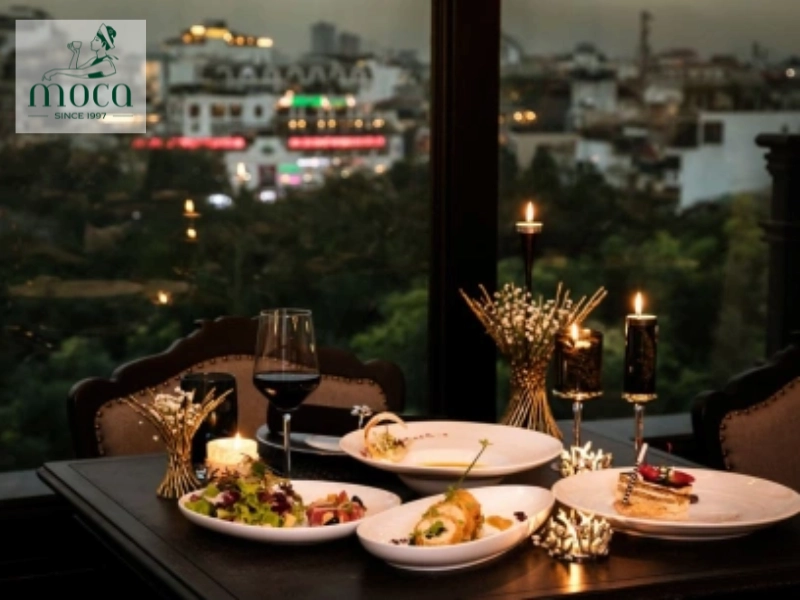
The essence of fine dining—elegance, precision, and culinary artistry in every detail.
2. Pillars of the fine dining experience: cuisine, service, and ambiance
The style of fine dining is built upon three foundational pillars: the food itself, the manner in which it is served, and the environment in which it is enjoyed.
2.1. Exquisite cuisine: The artistry on the plate
The heart of any fine dining establishment is its exquisite cuisine. This begins with an uncompromising approach to ingredient quality and sourcing. Chefs prioritize fresh, high-quality, and often seasonal ingredients, with a preference for those that are locally and sustainably sourced. This commitment is evident in the use of premium and rare ingredients that elevate a dish from mere food to an experience.
Examples include the rich marbling of authentic A5 Wagyu beef, the unmistakable aroma of white Alba truffles, or the delicate complexity of hand-picked saffron. These are often prepared using advanced culinary techniques like sous-vide to ensure perfect texture and temperature, or molecular gastronomy to create surprising elements like foams and gels that challenge and delight the palate.
This masterful preparation is matched by artistic presentation; dishes are treated as culinary masterpieces, meticulously plated with aesthetic precision. The menu structure itself is a key part of the fine dining style. Guests can typically choose from:
- Multi-course meals: A structured journey ranging from three to over twelve courses, often including an amuse-bouche (a single, bite-sized hors d'œuvre), appetizers, main courses, palate cleansers, desserts, and mignardises (small post-dessert sweets).
- Tasting Menus (Degustation Menus): A curated sequence of smaller dishes designed to showcase a chef's creativity and the best seasonal ingredients available.
- À la carte and Prix fixe options: Offering flexibility to choose individual dishes versus enjoying a set menu at a fixed price.
A signature fine dining dish might be conceptualized as "Pan-Seared Diver Scallops served on a bed of Saffron Risotto, complemented by an Asparagus Purée and a delicate Truffle-infused Foam," a plate that balances rich flavors, varied textures, and stunning visual appeal.
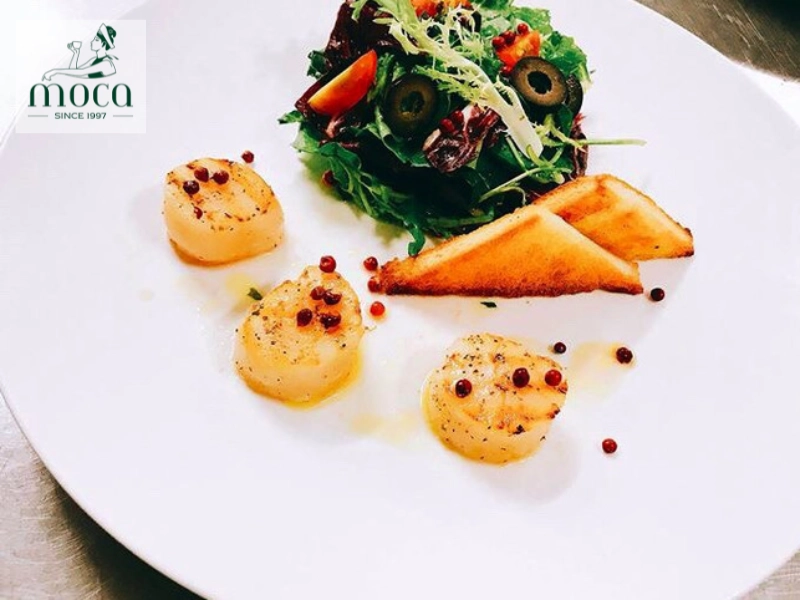
Elegance on a plate – the artistry of fine dining cuisine.
2.2. Impeccable service: The unseen choreography
Impeccable service is the invisible thread that ties the entire fine dining experience together. The staff are highly trained, professional, and discreet, with a high staff-to-diner ratio ensuring every need is met promptly. This goes beyond simple politeness; it is about personalized and anticipatory care, where a skilled team foresees a guest's needs before they are even articulated.
This intuitive approach is not just an art but a science. Research within the hospitality sector consistently demonstrates a powerful link between personalized service and customer satisfaction. Studies have shown that when guests feel personally recognized and cared for, their overall satisfaction and loyalty increase significantly, making them more likely to return and recommend the establishment. This focus on the individual is a cornerstone of true luxury hospitality.
This commitment is expressed through formal service etiquette. Protocols are strictly followed, such as serving food from the guest's left and clearing plates from the right, the expert guidance and wine service provided by a sommelier, and sometimes even dramatic table-side preparations that add a theatrical element to the meal.
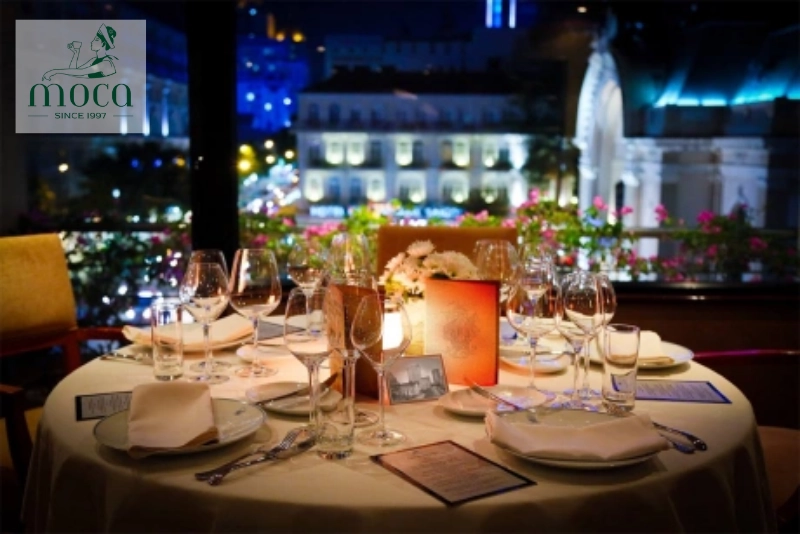
Impeccable service in motion — where every gesture is precise, seamless, and tailored to the guest’s experience.
2.3. Refined ambiance: Setting the stage for sophistication
A refined ambiance is the final pillar, creating a stage for the culinary performance. This is achieved through elegant interior design and decor, featuring luxurious furnishings, curated artwork, and sophisticated lighting that cultivates an exclusive and comfortable atmosphere. Table settings are meticulous, with fine linens, polished silverware, crystal glassware, and exquisite china.
The sensory environment is carefully controlled. The experience is enhanced by subtle background music, often classical or jazz, pleasant aromas, and optimal spacing between tables to ensure privacy and allow for quiet conversation. The powerful influence of these atmospheric elements is well-documented. Scientific studies on diner perception have found that environmental factors profoundly shape an experience. For example, research indicates that softer, warmer lighting and slower-tempo music not only create a more relaxed and intimate setting but can also enhance the perceived taste and enjoyment of food, encouraging guests to dine at a more leisurely pace.
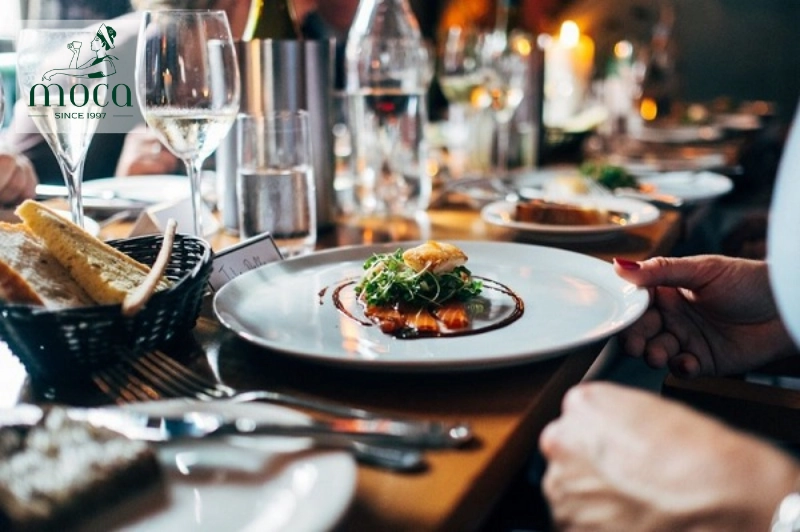
The refined ambiance—where every detail, from lighting to linens, crafts an atmosphere of quiet elegance and sensory harmony.
Learn more: Culinary Harmony: The Influence of Local Cultures on Fine Dining Cuisine
3. Navigating fine dining: Dress codes and etiquette
To fully appreciate the sophisticated dining world, understanding its customs is key. This includes adhering to the establishment's standards for attire and mastering table manners.
3.1. Understanding dress codes: Adhering to the restaurant's standards
A fine dining dress code is in place to maintain the restaurant's ambiance and show respect for the establishment and fellow diners. Common classifications include:
- Formal (Black Tie): Tuxedos for men; floor-length evening gowns for women.
- Semi-Formal: A suit and tie for men; a cocktail dress or elegant separates for women.
- Business Casual: A collared shirt and dress trousers for men (a blazer is recommended); a dress, skirt, or slacks with a stylish blouse for women.
- Smart Casual: The most relaxed, but still requires a polished look. Think dress trousers or smart chinos with a button-down shirt or polo for men, and stylish trousers or a skirt with an elegant top for women. Jeans, t-shirts, and athletic wear are generally inappropriate.
As an important principle, it is always better to be slightly overdressed than underdressed.
3.2. Essential dining etiquette: Mastering table manners
Proper fine dining etiquette ensures a smooth and respectful experience for everyone.
- Utensil usage: The golden rule is to start from the outside and work your way in. The outermost fork and knife are for the first course.
- Napkin etiquette: Once seated, place your napkin on your lap. If you must excuse yourself temporarily, place the napkin on your chair. At the end of the meal, place it loosely to the left of your plate.
- General table manners: Cell phone use should be avoided. Conversation should be kept at a volume that does not disturb other guests. It is polite to wait until all guests at the table have been served before beginning to eat. Always interact with staff politely and respectfully.
In specific scenarios, proper conduct is simple. Should you drop a utensil, do not retrieve it; subtly signal to a member of the service team, and they will provide a clean one. If you need to excuse yourself, do so quietly between courses, saying simply, "Please excuse me for a moment."
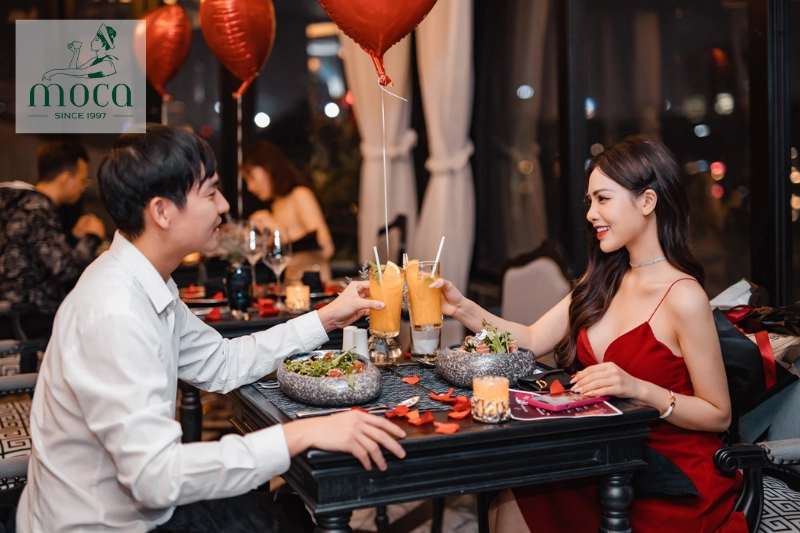
Fine dining etiquette and attire — where elegance begins before the first course is served.
4. The enduring value of fine dining: Beyond the meal
Ultimately, the enduring value of a fine dining experience is that it transcends the meal itself. It is not merely about satisfying hunger or indulging in luxurious ingredients, but about partaking in a carefully orchestrated event where every element—from the exquisite cuisine and impeccable service to the thoughtfully curated ambiance—comes together in perfect harmony. A fine dining experience invites guests into a world where time slows down, allowing them to savor not just flavors, but emotions, artistry, and human connection.
This elevated form of dining becomes a celebration of culinary mastery, showcasing the immense skill, creativity, and dedication of chefs, sommeliers, and service professionals who treat their craft with the reverence of true artists. Each dish tells a story, each course unfolds like a chapter, and every interaction is part of a larger narrative designed to leave a lasting impression.
It is this ability to evoke awe, spark joy, and create cherished memories that makes fine dining much more than a meal—it becomes a meaningful experience. For this reason, it continues to be the preferred choice for commemorating life’s most significant moments, from romantic milestones to important achievements. It offers not only nourishment for the body, but also an unparalleled journey for the senses and the soul.
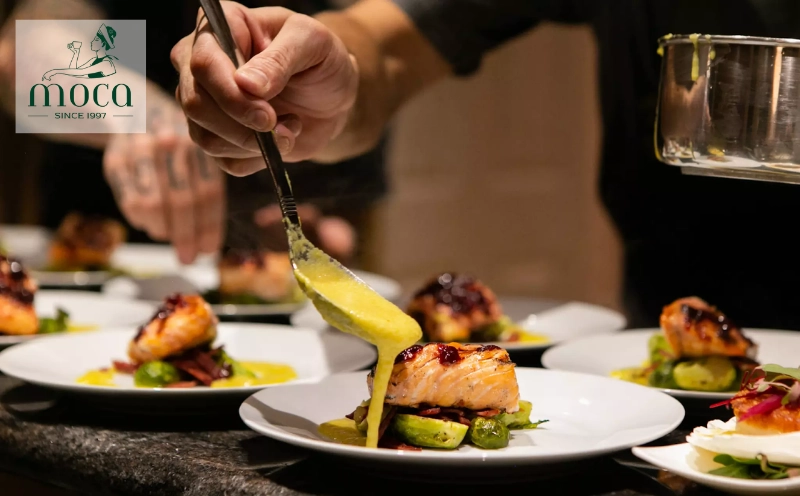
Fine dining as a timeless celebration — where every course is a chapter, and every moment a memory in the making.
Learn more: Different Fine Dining Styles Around the World: Exploring Unique Culinary Experiences and Exquisite Touches
The fine dining style is a multifaceted pinnacle of culinary and hospitality excellence. It is far more than sustenance; it is an art form, a carefully orchestrated symphony of gourmet cuisine, impeccable service, and refined ambiance. It is a journey designed to delight, surprise, and create cherished memories. For an authentic fine dining experience that embodies this spirit of unparalleled culinary artistry, impeccable service, and exquisite ambiance, we invite you to discover Moca Dining. Make a reservation today and allow us to transform your special occasions into moments you will treasure forever.






